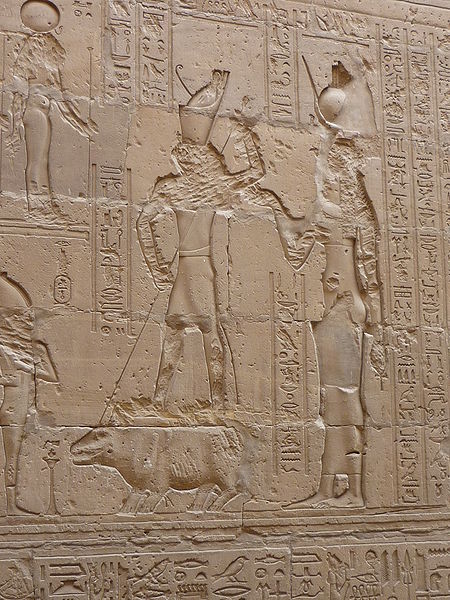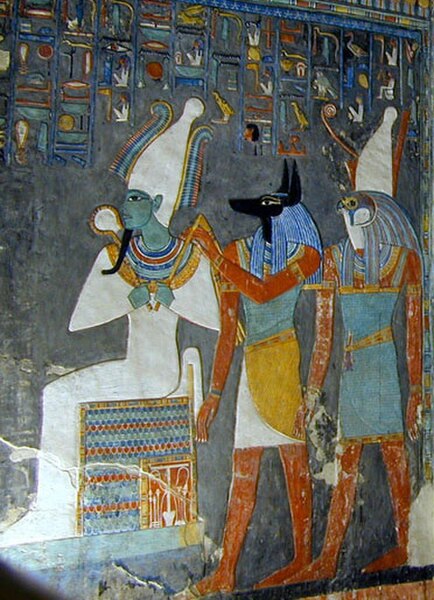Set is a god of deserts, storms, disorder, violence, and foreigners in ancient Egyptian religion. In Ancient Greek, the god's name is given as Sēth. Set had a positive role where he accompanies Ra on his barque to repel Apep, the serpent of Chaos. Set had a vital role as a reconciled combatant. He was lord of the Red Land (desert), where he was the balance to Horus' role as lord of the Black Land.
Set and Nephthys, 1279–1213 BCE, stone, Louvre
The set-animal, Sha, after an original by E. A. Wallis Budge.[page needed]
Set and Horus binding together upper and lower Egypt
Horus spears Set, who appears in the form of a hippopotamus, as Isis looks on
Ancient Egyptian religion
Ancient Egyptian religion was a complex system of polytheistic beliefs and rituals that formed an integral part of ancient Egyptian culture. It centered on the Egyptians' interactions with many deities believed to be present and in control of the world. About 1500 deities are known. Rituals such as prayer and offerings were provided to the gods to gain their favor. Formal religious practice centered on the pharaohs, the rulers of Egypt, believed to possess divine powers by virtue of their positions. They acted as intermediaries between their people and the gods, and were obligated to sustain the gods through rituals and offerings so that they could maintain Ma'at, the order of the cosmos, and repel Isfet, which was chaos. The state dedicated enormous resources to religious rituals and to the construction of temples.
The gods Osiris, Anubis, and Horus in the Tomb of Horemheb (KV57) in the Valley of the Kings
The sun rises over the circular mound of creation as goddesses pour out the primeval waters around it
Nun lifts the solar barque with the new-born sun from the waters of creation.
Statue of Khafre, an Old Kingdom pharaoh, embraced by Horus


![The set-animal, Sha, after an original by E. A. Wallis Budge.[page needed]](https://upload.wikimedia.org/wikipedia/commons/thumb/5/5a/Sha_%28animal%29.jpg/640px-Sha_%28animal%29.jpg)





